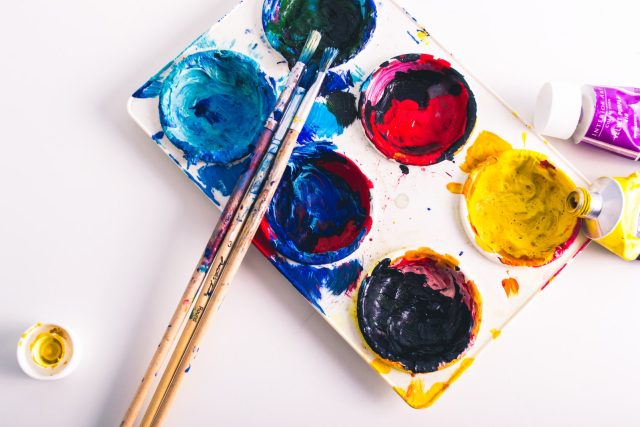Painting is a beautiful form of expression that allows novice artists to unleash their creativity and imagination onto a blank canvas. However, with so many painting techniques, knowing where to start can be challenging. Whether you’re a beginner or looking to refine your skills, this blog post will introduce you to the top five painting techniques that every novice artist should know. From brushstrokes to color mixing, these techniques will help you create stunning works of art and develop your own unique style. So, grab your paintbrushes, and let’s get started!
Painting for Novices
Painting is an art form that allows novice artists to experiment with different colors, textures, and techniques to create something unique and beautiful. Whether you want to express yourself creatively or just for a relaxing hobby, painting can provide a therapeutic and rewarding experience. While painting may initially seem intimidating, it is a skill that can be learned and developed with practice. With the right tools and techniques, even novice artists can create stunning works of art that they can be proud of. Whether you’re interested in oil painting, watercolors, or acrylics, there are painting techniques that can help you achieve the look and feel you’re going for.
Technique 1: Blocking In
Blocking in is a painting technique that involves creating a rough outline of the main shapes and colors of the subject. This technique is especially useful for novice artists still getting the hang of painting and needing a guide to follow. Blocking in the basic shapes and colors allows you to create a foundation for your painting and get a sense of how the final piece will look.
To use this technique, start by sketching the basic outline of your subject using a pencil or brush. Then, fill in the shapes with the main colors you plan to use without worrying about details or shading. Once you have a rough idea of the composition, you can begin refining the details and adding more layers of paint to create depth and texture. Blocking in is an excellent way to get started with painting and can help you build confidence in your skills as a novice artist.
Technique 2: Glazing
It is a painting technique that involves applying a thin layer of translucent paint over a dried layer of opaque paint. This technique allows you to create a luminous effect that can give your painting a sense of depth and richness. To use this technique, apply a base layer of opaque paint to your canvas. Once the paint has dried, apply a thin layer of translucent paint over the top, such as a glaze made with oil or acrylic medium. The glaze will allow the color and texture of the underlying layer to show through, creating a subtle, luminous effect. Glazing is a versatile technique that can be used to create a range of effects, from subtle color shifts to bold, dramatic effects. As a novice artist, experimenting with glazing can be a great way to explore the possibilities of painting and develop your own unique style.
Technique 3: Grisaille
It involves painting in shades of grey, black, and white to create a monochromatic underpainting before applying color. This technique can help novice artists to establish the composition and tonal values of their painting before moving on to color, allowing them to focus on the values and contrast in their piece. Start by sketching your subject on the canvas with a pencil to use this technique. Then, paint in the entire composition using shades of grey, black, and white. This will create a monochromatic underpainting that establishes the values of your piece.
Once the underpainting is dry, you can begin layering color over the top, using the underpainting as a guide for the values and contrasts in your piece. Grisaille can be an excellent technique for novice artists who are struggling with value and contrast, as it allows you to focus on these aspects of painting without getting distracted by color.
Technique 4: Underpainting
Underpainting is a painting technique that involves creating a basic sketch of your subject with a monochromatic underpainting before applying color. This technique allows you to establish the values and tonal range of your painting before adding color, giving you a solid foundation to build upon. Depending on the desired effect, underpainting can be done using various techniques, such as blocking in, grisaille, or glazing. Start by sketching your subject on the canvas with a pencil to use this technique. Then, paint in a monochromatic underpainting, using a technique such as blocking in or grisaille, to establish the values of your piece.
Once the underpainting is dry, you can add layers of color over the top, using the underpainting as a guide for the values and contrasts in your piece. Underpainting can be a great technique for novice artists who are still learning to balance their values and contrasts and can help create a more cohesive and harmonious painting.
Technique 5: Direct Painting
Direct painting is a painting technique that involves applying paint directly onto the canvas without any preliminary sketching or underpainting. This technique can be challenging for novice artists, as it requires a good understanding of color theory and composition. Still, it can also be a liberating way to paint, allowing for a more spontaneous and expressive approach. To use this technique, select your colors and mix them on your palette. Then, apply the paint directly onto the canvas, using your brush to blend and shape the colors as you go.
This technique can be used to create a range of effects, from loose and impressionistic to detailed and realistic. Direct painting is a great technique for novice artists who want to experiment with color and composition and develop their own unique style. It can also be a fun and satisfying way to paint, as it allows for a more intuitive and spontaneous approach.
Conclusion: Get Creative!
In conclusion, painting can be a rewarding and therapeutic hobby for novice artists, and various techniques can be used to create stunning works of art. Whether you choose to use techniques such as blocking in, glazing, grisaille, underpainting, or direct painting, the key is to experiment and find what works best for you. Don’t be afraid to try new things and make mistakes; these can be valuable learning experiences. With practice and perseverance, even novice artists can develop their skills and create beautiful, unique pieces of art. So grab your brushes, select your colors, and get creative!






























